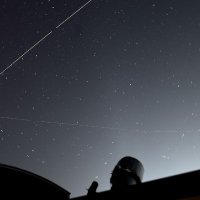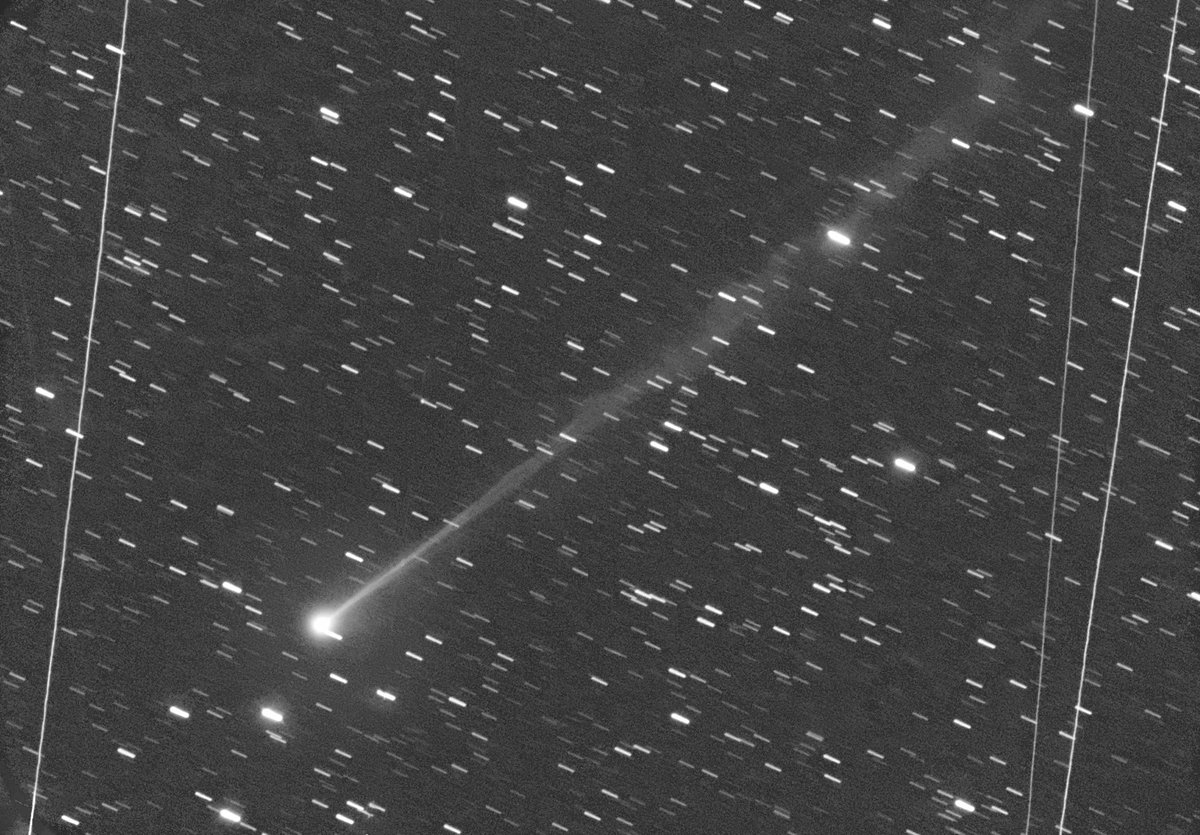
TheSkyLive
@theskylive
ID: 1871511941664866304
https://theskylive.com/ 24-12-2024 11:03:36
2 Tweet
13 Followers
56 Following




A visual look at two possible orbits for Planet Nine—one based on Mike Brown does not X & @kb4batygin’s model, the other inspired by a recent IRAS/AKARI paper (arXiv:2504.17288) by Takao Nakagawa, Amos Chen, Tetsuya Hashimoto, Simon Ho, and Seong-Jin Kim.
















![🇺🇦Taras Prystavski🇺🇦 (@prystavski) on Twitter photo Beautiful rendez vous of comet C/2023 T3 (Fuls) and a galaxy PGC 45405.
Comet C/2023 T3 (Fuls)
2025 May 17.38 UT m1=15.3 (m2=16.6) Dia.=0.7' Tail=3.4' in PA 274 deg...[T17] 0.43-m f/6.8 Corrected Dall-Kirkham + CMOS... T. Prystavski... (iTelescope observatory, Q62 (remotely Beautiful rendez vous of comet C/2023 T3 (Fuls) and a galaxy PGC 45405.
Comet C/2023 T3 (Fuls)
2025 May 17.38 UT m1=15.3 (m2=16.6) Dia.=0.7' Tail=3.4' in PA 274 deg...[T17] 0.43-m f/6.8 Corrected Dall-Kirkham + CMOS... T. Prystavski... (iTelescope observatory, Q62 (remotely](https://pbs.twimg.com/media/Gra2l2BWEAEkF5s.jpg)

![🇺🇦Taras Prystavski🇺🇦 (@prystavski) on Twitter photo Faint comet. It will pass perihelion on Jul. 13.0, 2025 and then start fading slowly after this.
Comet C/2023 V1 (Lemmon)
2025 May 08.46 UT m1=17.6 (m2=18.5) Dia.=0.3'... [T26] 0.51-m f/3.0 Cassegrain + CMOS... T. Prystavski... iTelescope observatory, U94 (remotely from Great Faint comet. It will pass perihelion on Jul. 13.0, 2025 and then start fading slowly after this.
Comet C/2023 V1 (Lemmon)
2025 May 08.46 UT m1=17.6 (m2=18.5) Dia.=0.3'... [T26] 0.51-m f/3.0 Cassegrain + CMOS... T. Prystavski... iTelescope observatory, U94 (remotely from Great](https://pbs.twimg.com/media/Gr0mP-EXoAAMce3.jpg)



![🇺🇦Taras Prystavski🇺🇦 (@prystavski) on Twitter photo Brand new comet! With low perihelion distance (q=0.335 AU) and two close approaches to Earth - on Aug. 12 (0.58 AU) and on Nov. 24 (0.40 AU). Comet will pass perihelion on Oct. 8, 2025.
Comet C/2025 K1 (ATLAS)
2025 May 28.40 UT m1=17.7 (m2=18.0) Tail=0.6' in PA 251 deg... [T26] Brand new comet! With low perihelion distance (q=0.335 AU) and two close approaches to Earth - on Aug. 12 (0.58 AU) and on Nov. 24 (0.40 AU). Comet will pass perihelion on Oct. 8, 2025.
Comet C/2025 K1 (ATLAS)
2025 May 28.40 UT m1=17.7 (m2=18.0) Tail=0.6' in PA 251 deg... [T26]](https://pbs.twimg.com/media/GsDjYGlWMAEHLWa.jpg)

